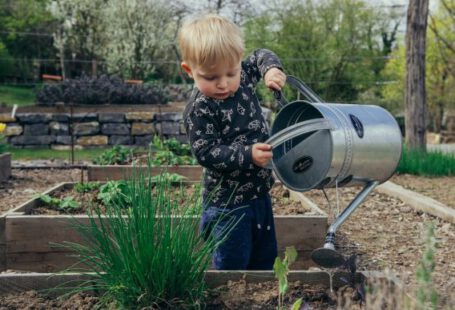Watering is an essential part of plant care. While it is important to provide plants with adequate water, it is equally important not to overdo it. Under-watering is a common problem that can lead to the decline and even death of plants. In order to prevent this, it is crucial to recognize the signs of under-watering. This article will discuss some of the most common signs to look out for.
1. Wilting Leaves
One of the first signs of under-watering in plants is wilting leaves. When a plant does not receive enough water, it cannot maintain its turgidity, causing the leaves to become limp and droopy. This is the plant’s way of conserving water. If you notice that your plant’s leaves are wilting despite regular watering, it is likely that under-watering is the culprit.
2. Dry Soil
Another telltale sign of under-watering is dry soil. When plants are not receiving enough water, the soil around them becomes dry and crumbly. You can easily check the moisture level of the soil by sticking your finger about an inch into the soil. If it feels dry to the touch, it is a clear indication that your plant needs watering.
3. Stunted Growth
Under-watered plants often exhibit stunted growth. When a plant lacks water, it cannot carry out essential processes such as photosynthesis and nutrient uptake efficiently. As a result, the plant’s growth is hindered. If you notice that your plant is not growing as it should, under-watering may be the cause.
4. Yellowing or Browning Leaves
Yellowing or browning of leaves is another sign of under-watering. When a plant does not have enough water, it cannot transport nutrients effectively, leading to nutrient deficiencies. This can manifest as yellowing or browning of leaves. If you observe these symptoms, it is important to increase your plant’s water intake to prevent further damage.
5. Dry and Brittle Stems
Under-watered plants often have dry and brittle stems. When a plant lacks water, its stems become weak and dry, making them more prone to breakage. If you notice that your plant’s stems are dry and brittle, it is a clear indication that it needs more water.
6. Early Flower and Leaf Drop
Under-watered plants may experience premature flower and leaf drop. When a plant is under stress due to lack of water, it will shed its flowers and leaves as a survival mechanism. This is the plant’s way of reducing water loss through transpiration. If you notice that your plant is dropping its flowers or leaves before they should naturally fall off, under-watering may be the cause.
7. Slow Recovery after Watering
Finally, under-watered plants may exhibit slow recovery after watering. When a plant has been deprived of water for an extended period of time, it may take some time for it to bounce back even after being watered. If you find that your plant is not showing signs of improvement despite adequate watering, it is possible that the damage caused by under-watering is irreversible.
In conclusion, under-watering can have detrimental effects on plants. By recognizing the signs of under-watering, you can take the necessary steps to rectify the situation and prevent further damage. Remember to regularly check the soil moisture, observe the condition of the leaves and stems, and provide your plants with adequate water to ensure their health and vitality.





